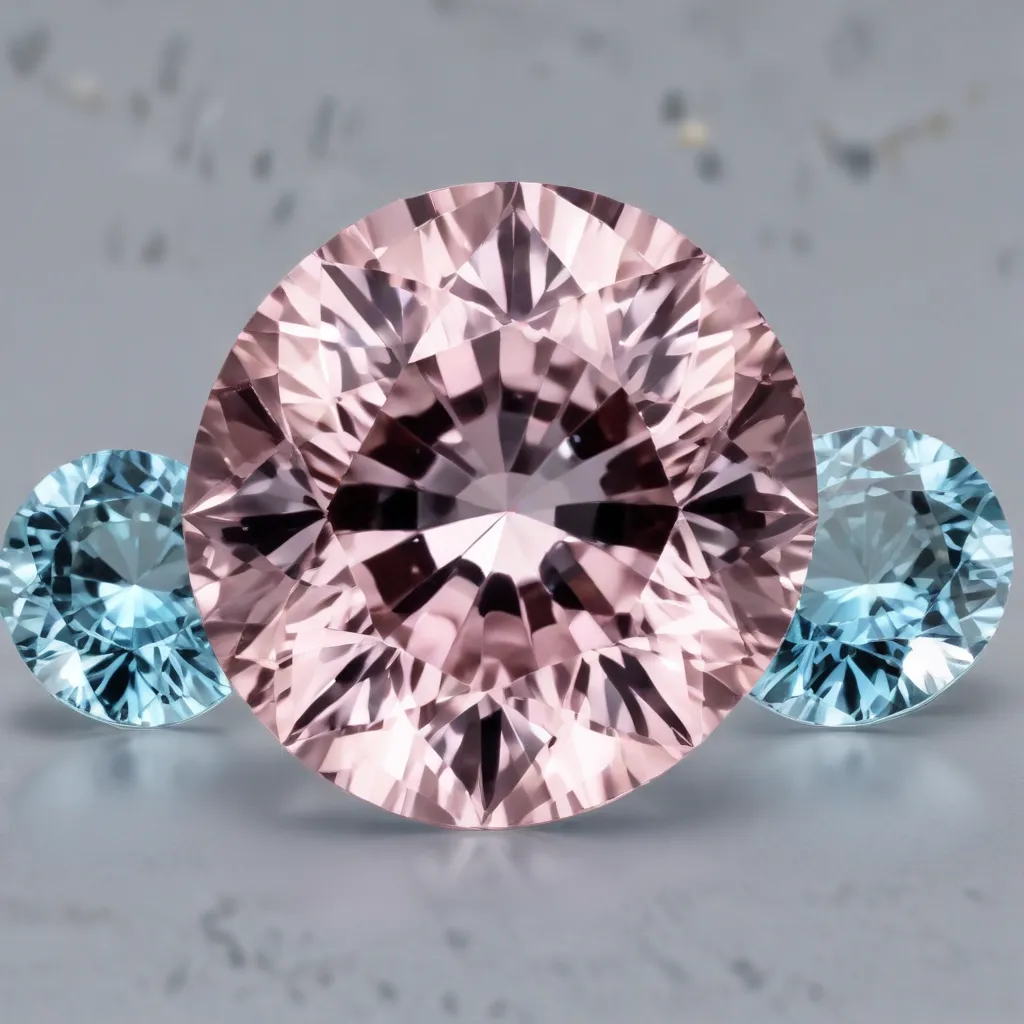
Nestled within the vast array of gemstone options, synthetic zircon stands out as a remarkable alternative to its natural counterpart. This lab-created marvel boasts a captivating brilliance, unparalleled clarity, and a price tag that makes it an alluring choice for jewelry enthusiasts and designers alike. Discover the secrets behind synthetic zircon’s allure and explore its myriad applications in the world of Shelby Gem Factory.
Characteristics of Synthetic Zircon
Synthetic zircon is a remarkable feat of modern science, crafted to mimic the natural gemstone with precision. Its physical properties are a testament to its craftsmanship, with a Mohs hardness of 7.5, making it a durable choice for everyday wear. Moreover, its refractive index of 1.78-1.98 and dispersion of 0.039-0.058 contribute to its unparalleled sparkle and fire.
The chemical composition of synthetic zircon is identical to its natural counterpart, consisting of zirconium silicate (ZrSiO4). This ensures that it not only shares the same visual appeal but also the same longevity and resistance to wear and tear. The controlled growth process also allows for the elimination of any inclusions or imperfections, resulting in a flawless clarity that rivals even the most pristine natural gems.
Advantages of Synthetic Zircon
The primary allure of synthetic zircon lies in its cost-effectiveness. While natural zircon can command a premium price due to its rarity and unique geographical distribution, synthetic zircon can be produced in a controlled laboratory environment, making it a more accessible and affordable option for jewelry enthusiasts and designers.
Moreover, the durability of synthetic zircon sets it apart from other diamond simulants. With a Mohs hardness akin to natural zircon, it is resistant to scratches, chips, and abrasions, making it a practical choice for everyday wear. This longevity ensures that your investment in a synthetic zircon-adorned piece will stand the test of time.
The versatility of synthetic zircon extends beyond its use in jewelry. Its optical properties and thermal conductivity make it a valuable material in various scientific and industrial applications, from optical devices to high-performance electronics.
Comparison to Natural Zircon
At first glance, it can be challenging to distinguish synthetic zircon from its natural counterpart. Both varieties share a captivating brilliance and exceptional fire. However, a closer examination reveals the key differences in their formation and origin.
Natural zircon is a naturally occurring mineral that is mined from the earth’s crust, often in regions with ancient geological activity. The unique conditions under which natural zircon forms imbue it with a distinctive character, including a range of colors and inclusions that make each gem truly one-of-a-kind.
In contrast, synthetic zircon is created in a controlled laboratory environment, where the growth conditions can be meticulously manipulated to produce a flawless, colorless gem. This stark difference in formation has implications for the gemstone market, as synthetic zircon offers a more consistent and affordable alternative to its natural counterpart.
Applications of Synthetic Zircon
The versatility of synthetic zircon extends far beyond the realm of jewelry and gemstones. Its unique optical properties and thermal stability make it a valuable material in various industrial and scientific applications.
Jewelry and Gemstone Industry
In the jewelry and gemstone industry, synthetic zircon has become a popular choice for its ability to mimic the brilliance and fire of diamonds at a fraction of the cost. Jewelers and designers often incorporate synthetic zircon into their creations, offering customers an accessible and durable alternative to traditional diamond engagement rings and other fine jewelry pieces.
Industrial and Scientific Uses
Beyond its decorative applications, synthetic zircon finds a home in the industrial and scientific sectors. Its high refractive index and thermal conductivity make it a valuable material in the production of optical devices, such as lenses and prisms. Additionally, synthetic zircon is used in the manufacturing of advanced electronics, where its thermal stability and resistance to radiation are highly prized.
Decorative and Ornamental Purposes
Synthetic zircon’s captivating beauty and versatility extend beyond the realms of jewelry and industry. This remarkable gem has found a home in the world of decorative and ornamental arts, where its brilliance and durability make it a popular choice for various applications, from high-end home décor to exquisite objets d’art.
Production of Synthetic Zircon
The creation of synthetic zircon is a testament to the ingenuity of modern science. The process often involves a technique known as hydrothermal synthesis, where zirconium silicate is grown in a controlled environment under high temperature and pressure conditions. This careful cultivation allows for the production of flawless, colorless gems that exceed the quality of their natural counterparts.
To ensure consistent quality and reliability, manufacturers employ rigorous quality control measures throughout the production process. From monitoring the growth conditions to meticulously examining the finished gems, these steps guarantee that each synthetic zircon meets the exacting standards set by the industry.
Furthermore, the environmental impact of synthetic zircon production is a growing concern, and manufacturers are continuously exploring ways to minimize their carbon footprint. By harnessing renewable energy sources and implementing sustainable practices, the industry is working to ensure that the creation of these captivating gems is not only cost-effective but also environmentally responsible.
As the world of gemstones continues to evolve, synthetic zircon stands as a shining example of the marvels that can be achieved through the intersection of science, creativity, and a commitment to innovation. Whether adorning a piece of fine jewelry or serving a vital role in the realm of industry, this remarkable gem is poised to captivate and inspire for generations to come.
For more information on the wonders of synthetic zircon and other gemstone alternatives, visit the experts at Shelby Gem Factory. Their team of passionate gemologists and designers are dedicated to helping you discover the perfect gem for your needs, whether you’re a jewelry enthusiast, a designer, or a collector.

